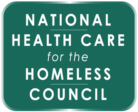Much of the U.S. is bracing for winter storms and brutally cold conditions over the coming days as frigid air escapes the Arctic.
National Weather Service meteorologist Alex Lamers said Friday that the potential for blizzard conditions is increasing, particularly in Kansas and neighboring portions of the Central Plains. As the storm moves through on Monday, hundreds of millions of people in the eastern two-thirds of the country will be left dealing with dangerous bone-chilling air and wind chills.
For unhoused people, extreme winter weather isn’t just uncomfortable: It’s deadly.
Exposure to the extreme cold can bring frostbite, hypothermia, and much more.
Health care providers are on the front lines of the climate and housing crises, and the deadly way those two things intersect.
How can municipalities and health centers combat the deadly effects of climate change on those who live on the street? Experts agree that the best way to prevent people from dying on the streets is to house them. Short of that, communities must take mitigating action.
Resources
- Cold-Related Injuries clinical resources page (NHCHC)
- Surviving Severe Weather: Tools to Promote Emergency Preparedness for People Experiencing Homelessness (NHCHC)
- Developing a Cold Weather Sheltering Plan for PEH (NHCHC)
- Exposure-Related Conditions: Symptoms and Prevention Strategies (NHCHC’s Healing Hands publication)
- The National Oceanic and Atmospheric Association’s cold weather safety page
- As the World Burns: HCH Responses to the Impacts of Extreme Weather and Climate Change (HCH2024 presentation materials from Susannah King, David Peery, Stephanie Martinez, Lucy Kasdin, and Brittany Melton-Hill)
- Homelessness and Mortality Fact Sheet (NHCHC)
Request Technical Assistance
Wondering how to address the effects extreme cold on the unhoused in your community? Need details on how other health centers are approaching this growing concern? Want to learn more about the process of setting up a warming center? The Council can help!

